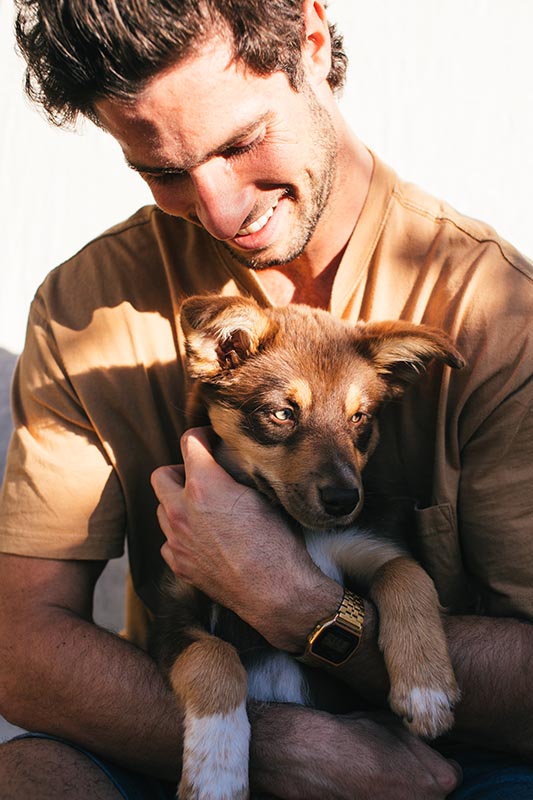Welcoming a new pet into your family is exciting but also presents challenges. Practicing some basic guidelines can help make a successful adoption transition more likely.
Be Patient
Joining a new family in a new home can be overwhelming for anyone, including your dog. Give your dog time to adjust and become familiar with all the new things she will encounter, including new visitors and other animals. Stay positive and make experiencing new situations fun, not forced.
Establish a Routine
A consistent and reliable routine is essential for creating a calm and organized environment. Set feeding and walking schedules and stick to them every day. Decide who is responsible for each task to avoid disorganization, which can lead to anxiety and unwanted behaviors in your pet.
Gradually Introduce New Pets to Your Family
Introducing your new dog to your resident dog should be something you plan to create a step-by-step process of familiarization, rather than expecting dogs to meet and become instant friends. Be mindful of the dogs’ safety during the interactions and be aware of their histories with other animals, their personalities, and their body language. This information can guide you and help you determine when adjustments are needed. Use these tips to make the process more successful:
– Use positive reinforcement
– Separate your dogs if either dog shows signs of fear or aggression, and try again once they are calm
– Choose neutral territory as the meeting place – go for a walk together or meet at a local park
– Consider breaks between interactions (especially for older dogs meeting younger pups)
– Never force dogs to react
– Put the resident dog’s toys away to prevent miscommunication during the first interactions
– Don’t repeat failed interactions; try a different setting or a new activity for the next meeting
Crate Training
Crate training can offer many benefits, including keeping your dog safe when you are traveling or cannot be with your pet. It can also make house-training easier. Set up crate training early as a safe place for your pet and make it a part of their routine. The crate should be a safe and comfortable place where your pet can relax. If your new dog is shows signs of distress or panic during crate training, speak with a veterinarian or behaviorist to determine the best way to proceed.
Provide Necessary Enrichment
Environmental enrichment is an essential part of animal health and welfare. This includes appropriate bedding, toys, and interactions that increase your dog’s comfort in your home. Watch your dog with new toys to ensure safety – some dogs will eat stuffing or squeakers, while others play quietly without destroying toys. There are many toys available, and the best options are durable toys that are unlikely to be swallowed, break teeth, or become stuck in the mouth.
Consider a Dog Trainer
Dog training is more than just teaching a dog to be obedient. It offers physical and mental stimulation, increases your dog’s confidence, develops the human-animal bond, and can improve behavior. Training methods should positive and rewards-based. Choose a trainer or training class wisely and consider interviewing the trainer or watching a class before choosing.
House-training
Even dogs that have been housebroken may have accidents at first when introduced to a new environment. Generally, using positive reinforcement and consistent commands such as “go potty” can make house-training easier. Supervising your dog closely when not confined, making frequent trips outside, interrupting (not punishing) an accident, and rewarding your dog immediately after eliminating outside are all recommended techniques.
Transition to New Food or Diet
There are many different diets on the market available to dogs, and a complete and balanced diet is necessary for healthy growth. If your new dog is doing well on his current diet, it may be best to continue with that diet until you can discuss food options with your vet. If a new diet is needed or recommended, it is important to transition your pet slowly by gradually mixing in the new food over 1-2 weeks. A slow transition will reduce the chances of an upset stomach or diarrhea.
Physical and Mental Exercise Are Key
Physical and mental exercise is key for a healthy and happy dog. Walking your dog is good physical exercise, but it also provides mental stimulation. Puzzle toys can offer mental exercise when your dog is indoors. The amount of exercise your dog needs depends on breed, age, and other factors, so talk to your vet about exercise recommendations.
Find a Veterinarian
A veterinarian is the best resource for your new dog’s health and well-being, so set up the relationship early. Your veterinarian can be especially helpful during your dog’s transition to your home. Remember to bring any previous history, medical records, and vaccine records to your first appointment so your vet can perform necessary tests and vaccines and schedule future visits.
Adopting a dog into your family can be a rewarding experience for both you and your new dog. Be patient and prepare for this event to increase the chances for a successful outcome.

